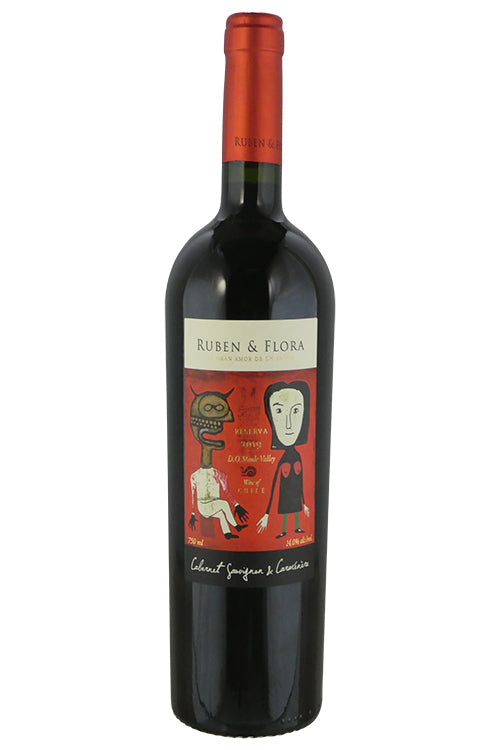1
/
of
1
Vina Tinajas Ruben & Flora Cabernet Sauvignon & Carmenere Reserve - 2021 (750ml)
Vina Tinajas Ruben & Flora Cabernet Sauvignon & Carmenere Reserve - 2021 (750ml)
Regular price
$12.99
Sale price
$12.99
Regular price
$14.99
Unit price
/
per
A hearty blend of 50% each Carmenere and Cabernet Sauvignon.
"This beautiful red wine blend promotes intimate expressions of friendship and conversation. Just as a couple’s inner beauty is developed through age and intimacy, these two grapes create a third entity with superior character."
Availability:
9 In Stock
$25 Shipping on Orders +$299
Couldn't load pickup availability
Share :

- varietal
- Region
- Sub - Region
- Type
- Reviews
Product Review
A hearty blend of 50% each Carmenere and Cabernet Sauvignon.
"This beautiful red wine blend promotes intimate expressions of friendship and conversation. Just as a couple’s inner beauty is developed through age and intimacy, these two grapes create a third entity with superior character."
Includes red wines where there is either no predominant variety or the blend is proprietary.
The Central Valley (El Valle Central) of Chile is one of the most important wine-producing areas in South America in terms of volume. It is also one of the largest wine regions, stretching from the Maipo Valley (just south of Santiago) to the southern end of the Maule Valley.
Maule Valley is the largest wine-producing region in Chile other than the Central Valley, of which it is a part. It has 75,000 acres (30,000ha) under vine, and has traditionally been associated with quantity rather than quality. But this is rapidly changing – the bulk-producing Pais vine is gradually being replaced with more international varieties such as Cabernet Sauvignon and Carmenère, and careful winemaking practices are being employed to make some world-class red wines from old-vine Carignan.
Red wine is wine made from dark-coloured grape varieties. The color of red differs based on the grapes variety or varieties used.Interestingly, black grapes yield a juice that is greenish-white. The actual red color comes from anthocyan pigments (also called anthocyanins) from the skin of the grape (exceptions are the relatively uncommon teinturier varieties, which produce a red colored juice). Most of the production centers around the extraction of color and flavor from the grape skin.


